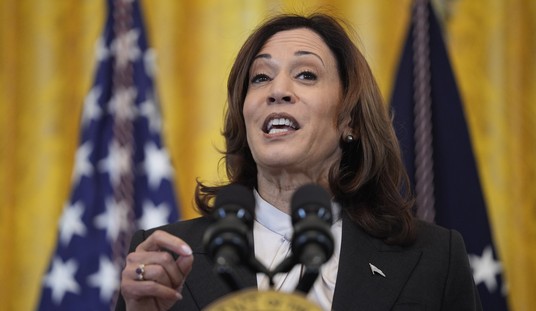Have had a few analysts call me, and friends. What’s up with $CME stock? Since beating the street on earnings November first, the stock has been on a one way ticket to Hades.
The overall market hasn’t helped. It’s not as if the market is up crisply this month.
Since CME is more of an applied technology company or a software as a service company, it shouldn’t trade like the banks, but more like the $QQQ. But it tracks the banks. As my friend Howard Lindzon says, “if you turn the chart over it looks bullish.”
Clearly, the MF Global situation is weighing on the stock. But why? I don’t think that CME has any legal culpability in this entire situation. The average daily volume is pretty good. However, their management handled the situation clumsily. The aftermath isn’t that CME is a bad company. The wake of MF has left the marketplace with a crisis of confidence in the company. That is what is dragging the stock down.
SPDR S&P 500 Stock Chart by YCharts
CME executives have released papers and data points, but they haven’t gone out and actively engaged the market. Their strategy has been the “megaphone strategy” instead of intense customer interaction. Every statement sounds as if a lawyer wrote it, not a real person that is concerned with solving real problems. Introducing brokers are scared. Traders are skeptical. Even though the futures business is virtual and electronic, at its core it’s still a people business. Especially for the broker community.
The grunts in the clearing house have been blindsided. This is the time that the execs need to protect them, and boost their morale. I don’t know how they are faring, but I imagine every day is filled with dread. CME looks bad and followed all the rules.
Recommended
CME execs passive strategy allows false and misleading statements to fill the air. Goldman, no friend to CME, had an analyst opine that they had legal trouble or might have legal trouble. Sensationalism reigns. Zero Hedge published a blurb from a broker where they recommended not to trade futures. Investigation of that brokers website would show you they were a wacko on par with the folks that thing space aliens landed in New Mexico.
The press has tried to cover it as accurately as they can. However, without one side continually engaging the community and feeding them good information, they are writing the story with one hand tied behind their back. Does anyone think that lawyers for MF are going to feed the media anything that is credible when their client is looking at spending a fair amount of time in a federal prison?
The FIA is the clearing firms mouthpiece. John Damgard, their president, once told me he was irritated that no FCM’s were on the CME board. I guess now we know why. There aren’t any independent traders on the FIA board either. FIA’s statement on the situation was dry legalese. They have to appease their fellow clearing firms, and aren’t going to come down hard on MF.
One thing that is clear, it doesn’t matter how many strictures are in place, when a person leading a firm has no ethics and is hell bent to commit fraud, they do it. My guess is MF became desperate. They had a cash hole to fill. Corzine had a tremendous ego and didn’t want to be seen as an utter failure. He broke all ethical rules and plugged the cash hole with customer money and figured if he was fast enough, and the market turned, he could make it all right. But the “bull in the china shop” style of trading rarely works unless you are ripping off your customers with risk free arbitrage like he did at Goldman.
The National Futures Association hasn’t said much either. Fill out a questionnaire. As is typical of agencies, they run and duck for cover at the first sign of trouble. Tell me again, why do we have them around? Just to feel good about ourselves and provide more paperwork to do.
The CFTC is running around like a chicken with its head cut off. Jill Sommers is doing the best that she can, but Gary Gensler is totally over matched as chairman. He has been since the day he took office. Why do we need a regulator? They do very litte in the way of market surveillance. We had a CFTC guy in the Eurodollar pit. He was clueless standing there in his bright yellow jacket. Commissioners like Bart Chilton are career bureaucrats. They don’t know markets. They don’t understand them. Corzine totally played them for the stooge they are. Aren’t you relieved we passed Dodd-Frank?
I have spoken with a few futures executives, and for the life of them, they can’t believe that Corzine did what people are insinuating he did. But, desperate people do desperate things. My experience is that there are more bad apples on the SEC side of the business than the futures side. But, I would agree that when big money and ego is involved, you are going to find a lot of shady guys. It’s the same as James Carville’s statement about waving a dollar through a trailer park. Up until the 1960's, there were a lot of nefarious characters in the futures business, but the self regulatory standards were improved greatly then, as was the culture at the exchanges. On the trading floor, we always had a few charlatans, but in general everyone was honorable. Corzine came from Goldman Sachs($GS), and their culture. It’s not one of honor or grace under fire.
We used to see graft on a small scale in a pit. A local trader would be debit, at the end of their rope, and all of a sudden they would start doing nefarious things to make money. An order filler would have a big error and then they would begin trading against the deck to make it back. Many people say you need to golf with people to understand them. I disagree. Put them in a trading pit trading their own money and see what they do when the chips are against them and they are in a deep hole. Then you find out if they are scumbag or not.
I do know that the CME guys were slow, but they aren’t scumbags. I can’t say that about MF Global. I wouldn’t let my worst enemy clear there. Okay, maybe my worst enemy…..
I think the real question now is what next? John Lothian posted a good article on his website. We are all concerned.
“But the biggest threat is to the future. It’s that large investor who would have happily opened a futures account just a month ago, but now chooses not to because he is unsure what would happen to his funds should a bankruptcy occur at his broker of choice.”
I might add, the small guy isn’t going to rush out and open a futures account to take a shot in the emini Gold contracts after he sees a commercial on Fox television either.
There is a lot of speculation of things that could happen. One outcome could be that the CFTC says that clearing firms can’t invest customer cash for profit. That will really screw with their business model, and plenty of them might go out of business. Another aftershock might be more audits, more transparency and reporting. That would increase costs to clear, and increase customer costs.
It is really hard to say where we go from here. But confidence has been dented. Acknowledging that publicly would be a smart thing to do, and at the same time begin a dialogue to rebuild it and make things better than they were before.
CME was once a darling of Wall Street. It had a valuation of almost $30 billion. It’s now close to half that. The market has been tough, Dodd-Frank didn’t work out for them, and Obama and his Chicago cronies haven’t been their friend. But CME management has a lot to answer for. Not just MF Global.


























Join the conversation as a VIP Member